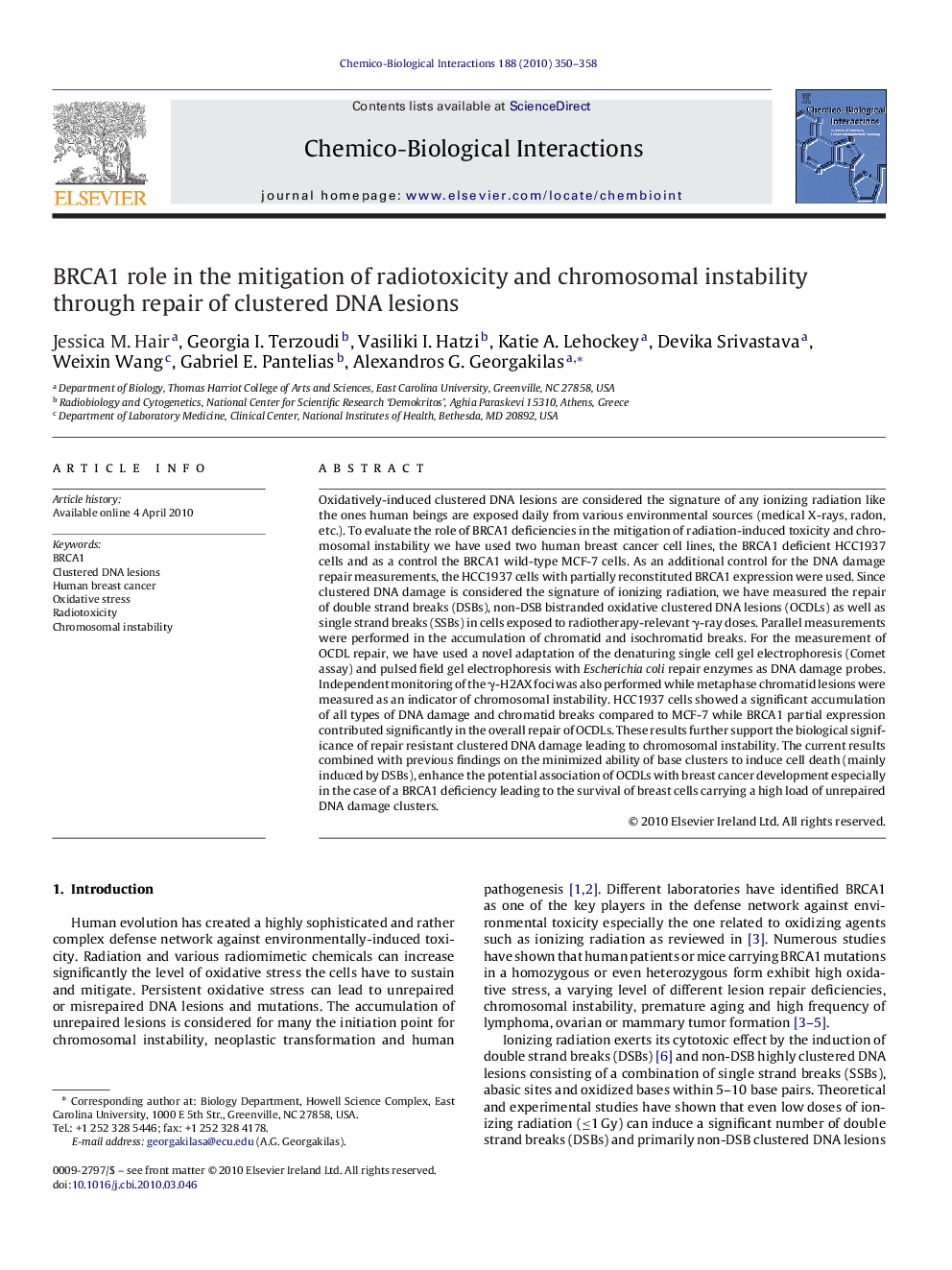| کد مقاله | کد نشریه | سال انتشار | مقاله انگلیسی | نسخه تمام متن |
|---|---|---|---|---|
| 2581688 | 1130201 | 2010 | 9 صفحه PDF | دانلود رایگان |

Oxidatively-induced clustered DNA lesions are considered the signature of any ionizing radiation like the ones human beings are exposed daily from various environmental sources (medical X-rays, radon, etc.). To evaluate the role of BRCA1 deficiencies in the mitigation of radiation-induced toxicity and chromosomal instability we have used two human breast cancer cell lines, the BRCA1 deficient HCC1937 cells and as a control the BRCA1 wild-type MCF-7 cells. As an additional control for the DNA damage repair measurements, the HCC1937 cells with partially reconstituted BRCA1 expression were used. Since clustered DNA damage is considered the signature of ionizing radiation, we have measured the repair of double strand breaks (DSBs), non-DSB bistranded oxidative clustered DNA lesions (OCDLs) as well as single strand breaks (SSBs) in cells exposed to radiotherapy-relevant γ-ray doses. Parallel measurements were performed in the accumulation of chromatid and isochromatid breaks. For the measurement of OCDL repair, we have used a novel adaptation of the denaturing single cell gel electrophoresis (Comet assay) and pulsed field gel electrophoresis with Escherichia coli repair enzymes as DNA damage probes. Independent monitoring of the γ-H2AX foci was also performed while metaphase chromatid lesions were measured as an indicator of chromosomal instability. HCC1937 cells showed a significant accumulation of all types of DNA damage and chromatid breaks compared to MCF-7 while BRCA1 partial expression contributed significantly in the overall repair of OCDLs. These results further support the biological significance of repair resistant clustered DNA damage leading to chromosomal instability. The current results combined with previous findings on the minimized ability of base clusters to induce cell death (mainly induced by DSBs), enhance the potential association of OCDLs with breast cancer development especially in the case of a BRCA1 deficiency leading to the survival of breast cells carrying a high load of unrepaired DNA damage clusters.
Journal: Chemico-Biological Interactions - Volume 188, Issue 2, 5 November 2010, Pages 350–358